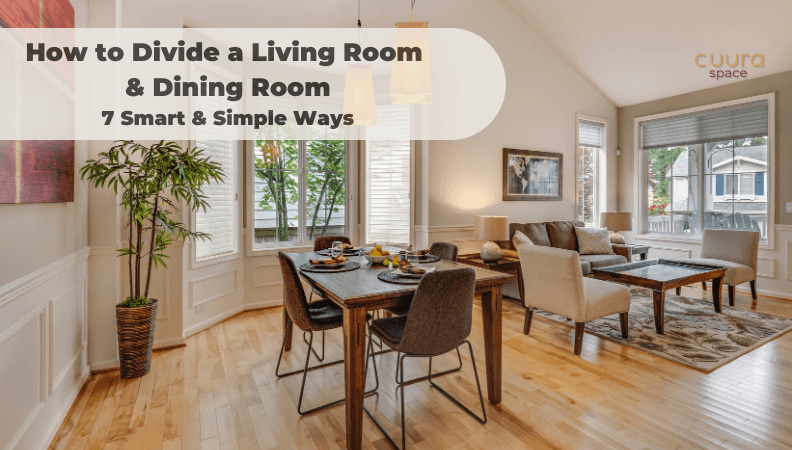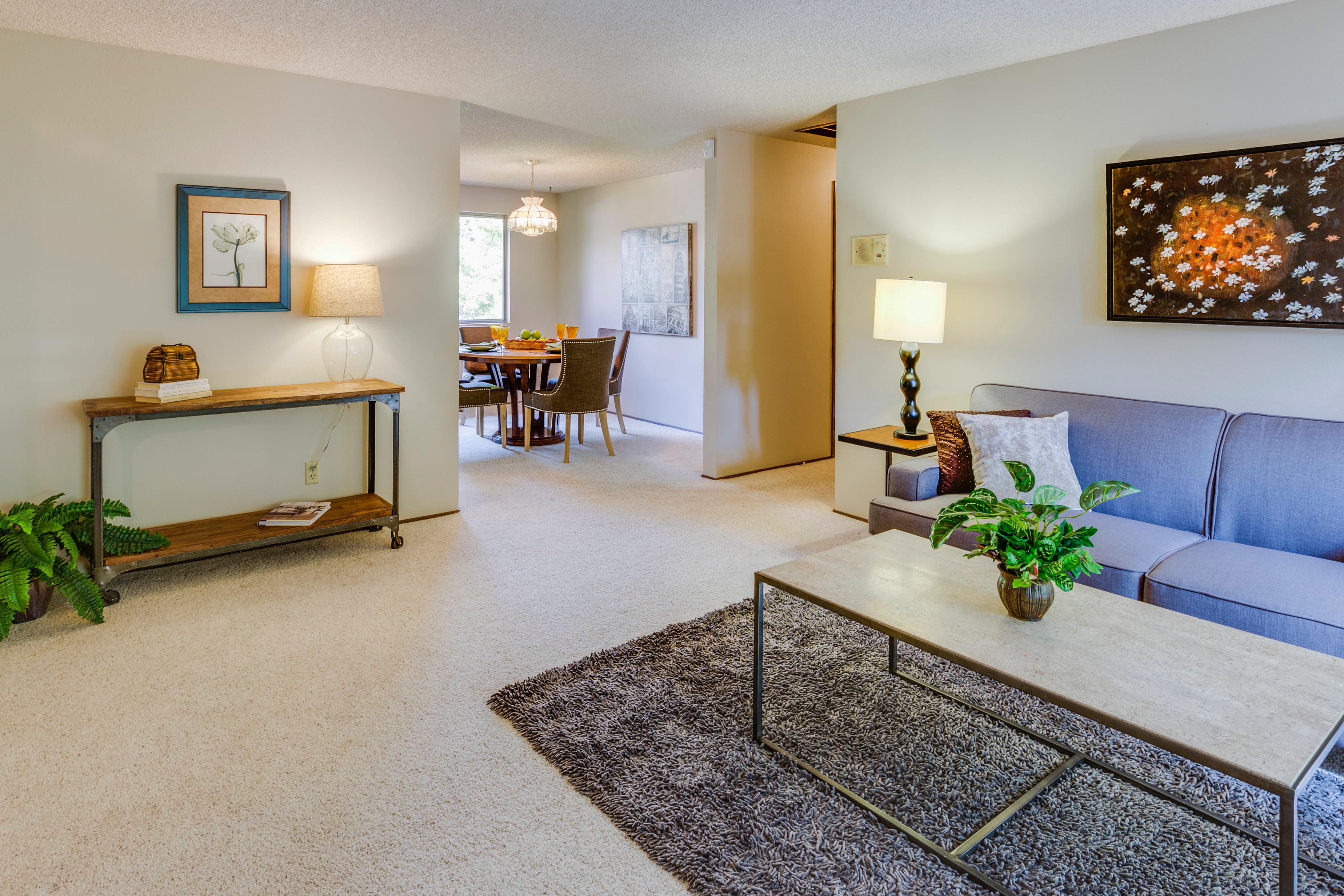Do you have an open-plan living and dining space? Combining the two areas can create a spacious and welcoming atmosphere, but sometimes it's necessary to establish clear zones.
Whether you're dealing with a small space or simply want to create a more defined layout, there are numerous smart and simple ways to divide your living room and dining room. In this article, we'll explore seven clever methods to create distinct areas while maintaining a harmonious and stylish environment.
7 Smart & Simple Ways to Divide a Living Room and Dining Room
1. Use furniture placement to create zones
A. Use a large or L-shaped sofa to separate spaces
One of the simplest ways to divide your living and dining areas is by using a large couch or an L-shaped sofa. Positioning it strategically can act as a barrier between the two spaces, while still allowing for an open and flowing atmosphere. This method is especially effective in smaller spaces where physical partitions may be too intrusive. If you have limited living space, consider our sofas for small living rooms.
B. Arrange your dining table perpendicularly
Placing your dining table perpendicularly to the living area can help establish a clear boundary between the spaces. This layout is particularly useful when your living and dining areas share a common wall, as it effectively utilises the available space.
2. Incorporate a room divider or partition
A. Use a bookshelf
A bookshelf can serve as both a functional and stylish room divider. Select one with open shelves to maintain a sense of continuity between the two spaces while providing a clear division. Fill the shelves with books, decorative items or potted plants to add personality and flair.
B. Opt for a folding screen or curtain
For a more flexible and temporary solution, consider a folding screen or curtain. These options can be easily moved or removed depending on your needs, and can also add an artistic touch to your space. Choose a design that complements your interior décor for a seamless integration.
3. Incorporate an area rug
Using an area rug is a subtle yet effective way to visually separate your living and dining spaces. Select a rug that fits well within the boundaries of your living area, and arrange your furniture on top of it. This will create a clear distinction between the two zones, while also adding warmth and texture to your space.
4. Utilise lighting to create distinct atmospheres
A. Use different types of lighting
Incorporating various types of lighting can help establish distinct atmospheres within your living and dining areas. For example, use pendant lights above your dining table for a more intimate and focused setting, while employing floor lamps or table lamps in your living area to create a cosy and relaxed atmosphere.
B. Install dimmer switches
Dimmer switches can provide even greater control over your lighting, allowing you to easily adjust the mood and ambiance of each space. This flexibility makes it simple to transition between casual daytime gatherings and more formal evening events.
5. Play with colour and texture
A. Use contrasting colours and patterns
Employing contrasting colours or patterns can help to visually separate your living and dining spaces. Choose complementary shades that work well together, or opt for a bold accent wall to create a striking focal point.
B. Introduce different textures
Incorporating various textures can also help to define your zones. For example, use a plush rug in your living area and a sleek, polished floor in your dining space to create a clear contrast.
6. Add a built-in feature
A. Install an entertainment unit
Now you can enhance your space by adding a built-in entertainment unit to your setup. With this feature, you have the option to mount your TV on the wall, creating a sleek and stylish look.
Additionally, you can choose a TV cabinet to neatly store your accessories and display items, keeping everything organised and easily accessible. This built-in feature brings convenience and functionality to your space, making it a perfect addition to your home entertainment system.
B. Consider a half-wall or pillar
A half-wall or pillar can provide a more permanent separation between your living and dining areas, while still maintaining an open and connected feel. This option is particularly effective if you have a larger space, and can be designed to complement your existing décor.
7. Integrate greenery
A. Use tall plants or trees
Incorporating tall plants or trees is a natural and visually appealing way to divide your living and dining spaces. Place them strategically to create a barrier between the two areas, while also adding a touch of life and freshness to your interior.
B. Install a vertical garden or green wall
A vertical garden or green wall can serve as both a room divider and a stunning design feature. This option not only creates a clear distinction between your spaces, but also promotes a sense of well-being and tranquillity.
FAQs
1. How can I create a sense of privacy in an open-plan living and dining area?
To create a sense of privacy in an open-plan living and dining area, you can incorporate various elements. Consider using room dividers, such as bookcases or folding screens, to separate the spaces visually.
Adding curtains or blinds to windows can also provide privacy when needed. Additionally, strategically placing furniture and utilising cosy rugs can help define distinct areas and create a more intimate atmosphere.
2. What if I have a small living and dining space?
If you have a small space, focus on using furniture placement, area rugs and lighting to create distinct zones. Opt for flexible solutions like folding screens or curtains, and avoid adding large, permanent structures that may make the space feel cramped.
3. Can I use different flooring materials to separate my living and dining areas?
Absolutely! Using different flooring materials can create a clear visual distinction between the two spaces. For example, choose a plush carpet for your living area and a sleek, polished floor for your dining space.
Summary
Dividing your living room and dining room doesn't have to be complicated or costly. By using furniture placement, room dividers, lighting, colour, texture, built-in features and greenery, you can create distinct and functional zones within your open-plan space. Experiment with these seven smart and simple ways to find the perfect solution for your home, and enjoy a harmonious and stylish living and dining environment.





